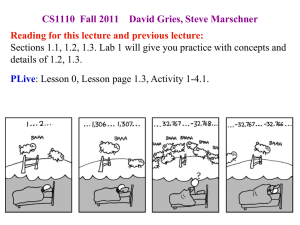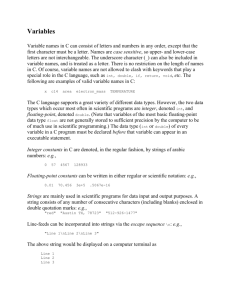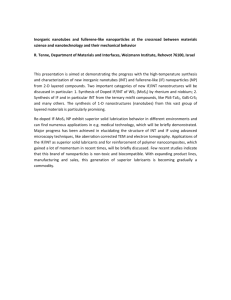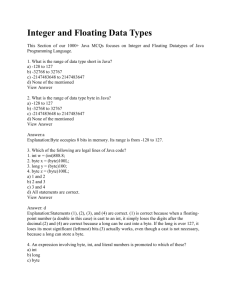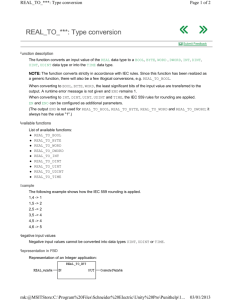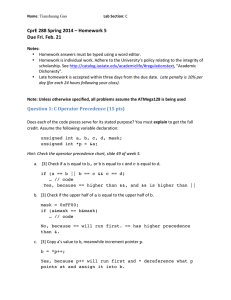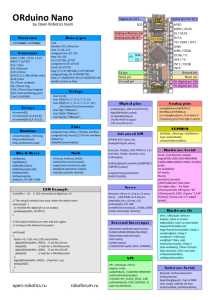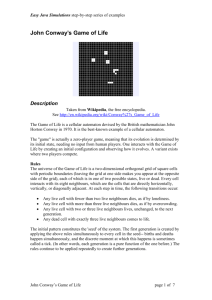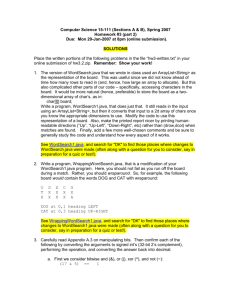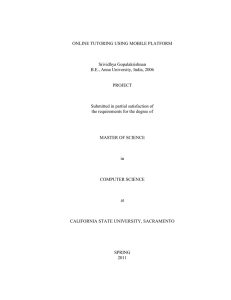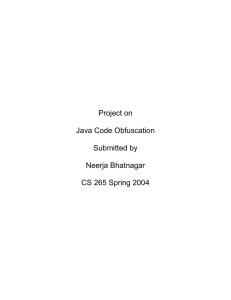doc
advertisement
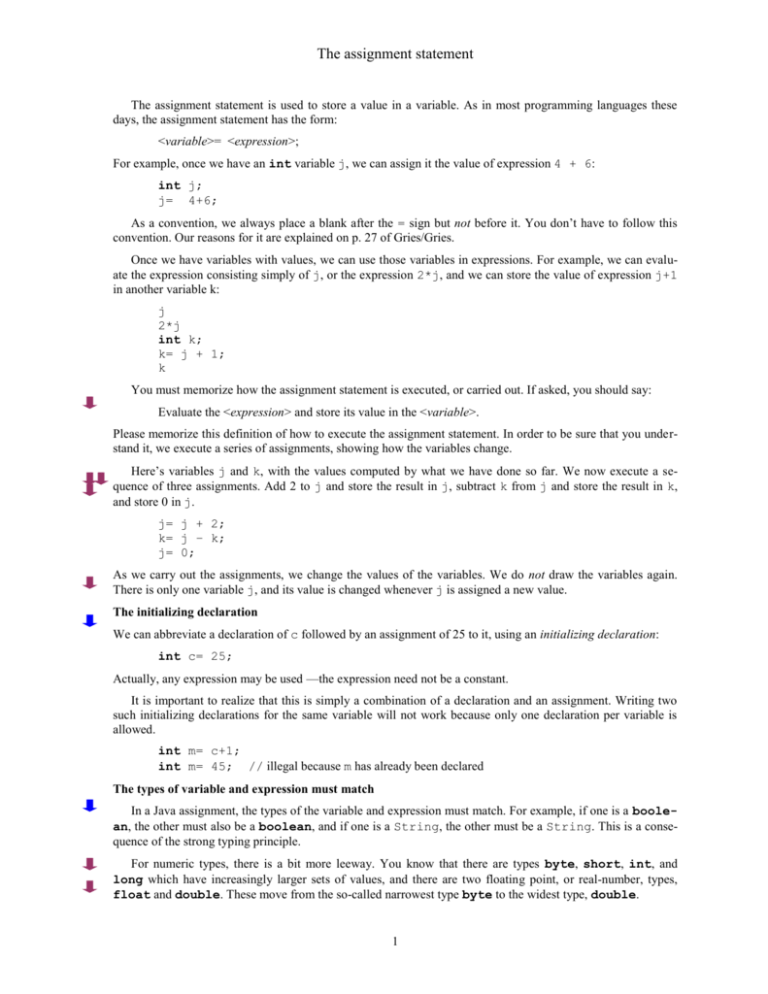
The assignment statement The assignment statement is used to store a value in a variable. As in most programming languages these days, the assignment statement has the form: <variable>= <expression>; For example, once we have an int variable j, we can assign it the value of expression 4 + 6: int j; j= 4+6; As a convention, we always place a blank after the = sign but not before it. You don’t have to follow this convention. Our reasons for it are explained on p. 27 of Gries/Gries. Once we have variables with values, we can use those variables in expressions. For example, we can evaluate the expression consisting simply of j, or the expression 2*j, and we can store the value of expression j+1 in another variable k: j 2*j int k; k= j + 1; k You must memorize how the assignment statement is executed, or carried out. If asked, you should say: Evaluate the <expression> and store its value in the <variable>. Please memorize this definition of how to execute the assignment statement. In order to be sure that you understand it, we execute a series of assignments, showing how the variables change. Here’s variables j and k, with the values computed by what we have done so far. We now execute a sequence of three assignments. Add 2 to j and store the result in j, subtract k from j and store the result in k, and store 0 in j. j= j + 2; k= j – k; j= 0; As we carry out the assignments, we change the values of the variables. We do not draw the variables again. There is only one variable j, and its value is changed whenever j is assigned a new value. The initializing declaration We can abbreviate a declaration of c followed by an assignment of 25 to it, using an initializing declaration: int c= 25; Actually, any expression may be used —the expression need not be a constant. It is important to realize that this is simply a combination of a declaration and an assignment. Writing two such initializing declarations for the same variable will not work because only one declaration per variable is allowed. int m= c+1; int m= 45; // illegal because m has already been declared The types of variable and expression must match In a Java assignment, the types of the variable and expression must match. For example, if one is a boolean, the other must also be a boolean, and if one is a String, the other must be a String. This is a consequence of the strong typing principle. For numeric types, there is a bit more leeway. You know that there are types byte, short, int, and long which have increasingly larger sets of values, and there are two floating point, or real-number, types, float and double. These move from the so-called narrowest type byte to the widest type, double. 1 The assignment statement The rule for an assignment of an expression that is a number is that the type of the variable has to be at least as wide as the type of the expression. For example, if we have a byte variable b and an int variable i, both of which contain 0, it is legal to assign b to i but illegal to assign i to b. byte b= 0; int i= 0; i= b; b= i; // illegal The reason for the rule should be clear. Assigning a wider-type value to a narrower-type variable may lose information or result in overflow of some sort. For example, how could 6000 be stored in a byte variable? You might think that Java would allow an assignment of an int to a byte but would complain at runtime if the int value were too big. However, this would violate the strong typing principle, as designed in Java. 2




